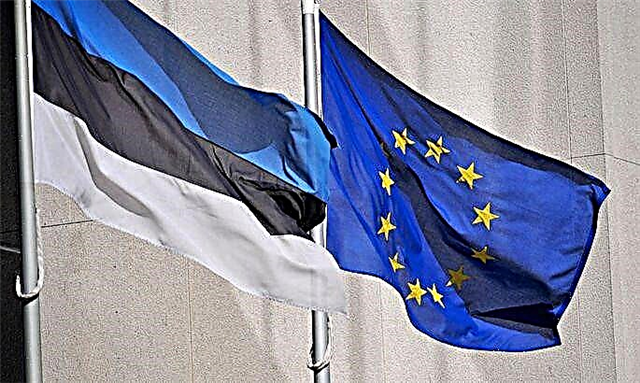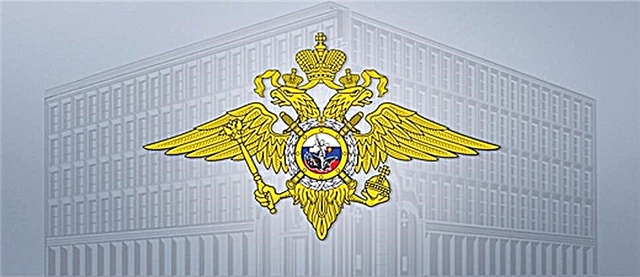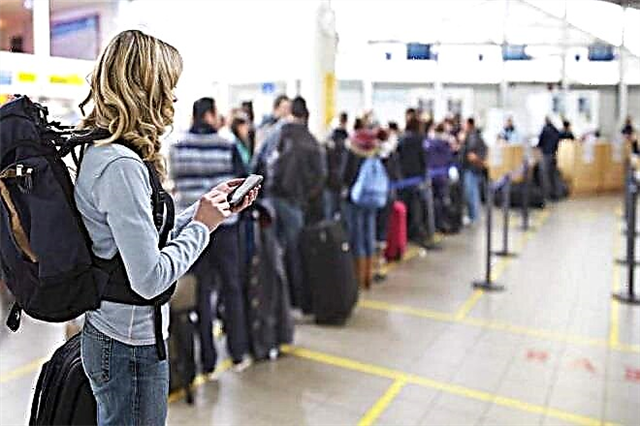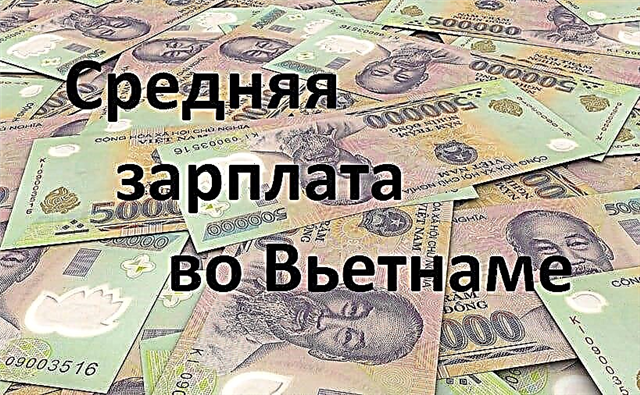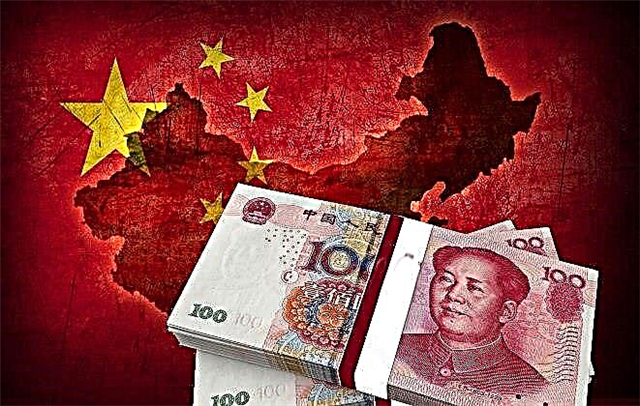In terms of financial strength, China can safely argue with the United States and even enter into trade confrontations with them. However, back in 1978, the Celestial Empire had rather modest starting positions, and in order to accomplish the notorious "miracle" of the Communist Party and Deng Xiaoping personally, he had to undertake significant legislative reforms. This process is not over even today. The authorities of the People's Republic are trying to avoid stagnation by all means, including lowering taxes in China with an eye to reviving GDP growth and attracting investors.

Types of taxes
The list of taxes and fees in the PRC is quite large. The main ones can be considered:
- income tax (from income of individuals and profits of commercial entities);
- VAT;
- excise taxes;
- fees associated with the purchase and use of property: for the ownership of real estate, for the purchase of housing and commercial premises, for the purchase of vehicles and their use, for the transfer of ownership and the increase in the value of land;
- additional fees for conducting activities: fees for urban construction, for agricultural plots allocated for development, for the use of urban areas, resource payments for the development of deposits;
- specific contributions: purchase tax for the processing of tobacco leaf, collection from VAT payers for education);
- stamp duty.
It should be borne in mind that there are several dozen economic zones in China, on the territory of which preferential tax conditions and customs preferences have been introduced. In addition, there are also special administrative regions (SARs) Hong Kong, Taiwan and Macau, the tax system of which is approved by the domestic legislation of the SAR in the framework of the idea of "one country, two systems".
Business taxes
On October 30, 2021, the State Council of the People's Republic of China decided to finally abolish the Business Tax, which had been in effect since 1993. The obligation was charged on the gross turnover (revenue) from the provision of works and services. With the onset of reforms and the first successes of the pilot programs for the transition to VAT, the obligation has lost its relevance.
As of 2021, the commercial sector pays:
- corporate income tax (corporate income tax) - a standard rate of 25%;
- VAT (VAT) - the maximum rate from April 1, 2021 has been reduced to 13%;
- resource fiscal obligations (Resources Tax);
- agency payments for personal income tax (Income tax) from the income of hired personnel and social contributions;
- consumption tax (Excise tax);
- contributions for certain types of commercial activities (construction, import of goods, processing industry).
Property taxes
Contributions from property owners and users are the responsibility of local authorities. The general principles for paying tax on commercial buildings and housing are that:
- the taxation base is the value of the object, reduced by a deduction in the amount of 10 to 30% of the original amount;
- if the premises are leased out, regular payments from the lessee are subject to taxation;
- the payer is the owner of the structure or its actual manager (when a dispute is open with respect to the property or the ownership right has not been established);
- the rate depends on how the tax base is determined: 1.2% of the adjusted acquisition cost or 12% of the lease amount.
The Temporary Real Estate Tax Regulation gives provincial and municipal governments the power to determine the exact amount of the tax deduction from the original cost. Buildings and structures located in territories classified as rural areas are exempted from obligations to pay taxes.
Mechanisms for taxing income of individuals
The rate and formula for calculating tax liabilities of individuals depend on the type of profit received. Taking into account the latest reforms and a decrease in the fiscal burden, the income tax in China in 2021 looks something like this.
| Type of receipts | Percentage of deductions under the updated law | Benefits and deductions |
|---|---|---|
| Remuneration for hired labor | Progressive rate from 3% (for salaries below RMB 36,000 per year) to 45% (for annual amounts over RMB 960,000) | Either RMB 5,000 monthly or RMB 60,000 once a year are excluded from taxable income. |
| Passive income (interest, royalties and dividends) | 0.2 | Separate benefits are not provided |
| Rent payments | 0.2 | The tax base before the determination of the obligation is reduced by 20%. Formula: tax = (gross income minus 20%) * 20% |
| Profit under construction contracts and income of individual commercial and industrial entities | Progressive tax from 5% (the amount of annual income is less than 30,000 RMB) to 35% (for a turnover of 500,000 plus RMB) | Reasonable operating costs are excluded from the total amount of monetary remuneration received |
The duty to calculate personal income tax in China rests with the agent (the person paying the remuneration) when it comes to wages or transfers in favor of a non-resident. The rest of the recipients declare a commitment and pay taxes on their own.
Indirect taxes - VAT and excise taxes
 Until 2021, all income from the provision of most types of work and services was subject to business tax, which made it difficult to export them and led to double taxation of non-resident income. Taking into account the export potential of China, the country's authorities have begun the process of transition to a more progressive type of commodity tax - VAT.
Until 2021, all income from the provision of most types of work and services was subject to business tax, which made it difficult to export them and led to double taxation of non-resident income. Taking into account the export potential of China, the country's authorities have begun the process of transition to a more progressive type of commodity tax - VAT.
By the end of 2021, the business tax rule had completely lost its effect, and according to the updated Temporary Regulation, VAT in China became the main indirect obligation.
The standard fee has been reduced from April 1, 2021 to 13%. When exporting, the seller can use a 0% rate to then apply to the PRC General Tax Administration for a loan refund.
Consumer taxes (excise taxes) are levied on the purchase of licensed goods - tobacco, alcohol, cosmetics, highly refined petroleum products, jewelry, pyrotechnics (14 items in total). Generalizing rates were not introduced, the obligation is charged per unit of goods or volume of products. Charged from manufacturers, importers and sellers of excisable products.
Taxation of profits and turnover of companies
Commercial enterprises in China deduct part of their profits to the budget at rates that depend on tax status, company size and type of activity. The law and the Regulations on the collection of income tax from business entities establish:
- general rate 25%;
- small / marginal enterprises must pay income tax of 20% (companies with an annual income of not more than 500 thousand yuan, with a team of less than 80 people and an asset value of no more than 10 million yuan);
- high-tech industries, which are of particular importance for the PRC, pay 15% of the income received, reduced by expenses.
Although the authorities canceled the sales tax in China in 2021, an analogue of the sales tax still exists here. The fact is that VAT payers in China are divided into ordinary and small ones.
The latter include those business entities that have not exceeded the revenue threshold of 500 thousand yuan for industrial facilities and 800 thousand yuan for the rest in the previous 12 calendar months. Such enterprises can refuse to take into account the input and output VAT, but at the same time they must pay 3% of the total amount of turnover.
Taxation for foreigners
Tax policy in China divides foreign companies into residents and non-residents. Those who have registered a branch or representative office in the PRC can pay taxes on a common basis with local payers. For them, the profit tax rate (gross income minus expenses) will be 25% in accordance with article 4 of the PRC law on corporate income tax of 2007.
The same rule establishes that non-resident entities, from which the Chinese tax service has not received information about self-registration, must pay 20% of the remuneration received in the country.
For cases where a foreign commercial structure does not have its own representative office and only passive income is received from sources in the PRC, a tax withholding mechanism is provided through a resident agent at a rate of 10%.
For individuals, in the matter of taxing income, the PRC authorities decided to simplify fiscal procedures. From January 1, 2021, foreigners who have spent 183 days or more in China in the last 365 days can apply for a tax residency certificate.
If the resident status is not obtained, then the salary of a foreign worker (at a progressive rate), passive income in the form of royalties or dividends from sources in the PRC at a rate of 20% will be taxed.
The agent / source needs to withhold the entire amount of the fiscal obligation from the remuneration accrued to the non-resident and transfer it to the budget.
Customs duty
Export and import of goods to the territory of China is accompanied by the payment of duties. On the basis of the Customs Code of the People's Republic of China, tariffs for the import and export of consumer goods and commercial goods are developed annually.
In addition, the customs tax on products from individual countries may change promptly depending on the political situation. So, during 2018-2019, China is waging a war of tariffs with the United States and regularly updates the list of increased tariffs.
And yet, in order to reduce the costs of national companies and the population for the purchase of imported products, the PRC is going to reduce import duties. For example, since November 2021, the duty has been reduced by 1,585 categories of goods: the general rate has dropped from 9.8 to 7.5%.
Chinese manufacturers have successfully mastered international retailing methods through major online trading platforms such as AliExpress. The growth in the volume of products sent from the PRC indicates that this has long become a way of shadow earnings for Russians. Therefore, from 2021, a kind of tax is introduced on parcels from China.
A 30% content duty will apply to parcels weighing more than 25 kg and with a declared price of more than € 500 per month. Information about shipments and data of their recipients will be sent to the Federal Customs Service of the Russian Federation directly from the border services of China.
Until 2021, it is planned to reduce the cost threshold to 200 euros per month. The advantage of this innovation is the fight against smuggling and counterfeit products.
Child birth tax in the PRC
 The problems of the aging of the nation and the bias in the gender composition towards the male population of China were a direct consequence of the birth control program of the 70s. The Chinese Communist Party was forced to revise the motto "one family - one child", and from January 1, 2021, it became a thing of the past.
The problems of the aging of the nation and the bias in the gender composition towards the male population of China were a direct consequence of the birth control program of the 70s. The Chinese Communist Party was forced to revise the motto "one family - one child", and from January 1, 2021, it became a thing of the past.
If initially it was planned to issue free permits only to those parents who are the only children in their families, then by 2021 proposals began to sound to legitimize large families and even stimulate the birth of new Chinese financially.
China's updated tax system in 2021 does not include a flat rate for determining the amount of the fine for the second child. Although initially the size of the financial sanction could reach several annual salaries, and administrative measures in the form of dismissal were envisaged in relation to civil servants.
Nevertheless, the abolition of "draconian" punishments did not push the citizens of the PRC to a demographic boom. The high rhythm of life, pathological employment, high costs of raising children and the lack of social support from the state are the reason that most couples do not plan a new replenishment in the family.
Other tax payments
In addition to fiscal whales, such as VAT, tax on income of citizens and enterprises, in the PRC there are a number of smaller and highly specialized types of obligations:
- Land tax - expressed in the collection for the use of land plots in the city (can reach 30 yuan per square meter), as well as payments for the occupation of agricultural land for new construction: the rate ranges from 5 to 50 yuan per square meter and depends on the security of the region lands suitable for agricultural processing.
- Contribution for the purchase of a new car - 10% of the cost. Cars in the secondary market are exempt from taxation.
- Annual transport tax - the rate depends on the type of vehicle, fees are paid by legal entities and individuals who own motorcycles, cars and trucks, water transport and agricultural machinery.
- Resource tax in China - contributions are paid by legal entities and entrepreneurs who extract minerals (gold, phosphorus and iron ores, oil, gas, etc.) or use water resources. The list of objects of taxation and rates is approved by the PRC government; the collection covers work that is carried out both on land and on the continental shelf.
- Stamp duty is a payment for transactions and legal acts that require certification. Charged in a fixed amount for each issued document, state certificate or certificate.
- Tax on urban construction and repairs - 1-7% of the amount actually paid VAT.
Tourists and businessmen traveling to China by plane should take into account that air carriers may not include a fuel surcharge in the cost of a flight (surcharge for the risk of an increase in the cost of fuel). As a result, the cost of the tour may increase significantly.
International agreements of the PRC on taxation
China's economic interests go far beyond its national borders. This also applies to attracting foreign investment into the country and investing Chinese capital around the world. Mutual commercially active activity is impossible without the settlement of double taxation issues and the exchange of fiscal information.
To prevent foreign payers from withholding and transferring taxes in China and Russia twice, in 2021 a new agreement was signed between the PRC and the Russian Federation. From 2021, its norms include income from the source, dividends and royalties, and also imply mutual exchange of information.
By 2021, the PRC has already concluded or renewed agreements with more than 100 countries of the world. Agreements on the offset of taxes paid on the territory of another country have been concluded with the USA, Germany and other EU members, the republics of the former USSR, most of the countries of South and North America, Africa, Asia and the Middle East.
Due to the peculiarities of the territorial structure, China was forced to sign similar agreements with its own autonomies (Hong Kong, Macau and even the disputed territory of the island of Taiwan). In most cases, the area of attention of international agreements includes income tax and personal income tax.
Some of the participants in the international economic system agreed only to exchange data. These include Argentina, Liechtenstein, Virgin and Cayman Islands, Bahamas, Bermuda and San Marino.
Reporting rules
 The traditional celebration of the New Year in China does not have a fixed date and falls on the end of January or the beginning of February.However, in calculating the periods for submitting reports, the PRC adheres to the generally accepted rules of the Gregorian calendar, that is, the tax year begins on January 1 and ends on December 31.
The traditional celebration of the New Year in China does not have a fixed date and falls on the end of January or the beginning of February.However, in calculating the periods for submitting reports, the PRC adheres to the generally accepted rules of the Gregorian calendar, that is, the tax year begins on January 1 and ends on December 31.
So far, there is no unified Chinese Tax Code, which could contain the same requirements for the deadlines for filing annual, quarterly or monthly reports. Each individual regulation or provisional provision provides its own framework.
For example, the deadline for submitting a personal income tax return depends on the type of income received and the presence of a tax agent:
- annual reports for residents when receiving income from several places (including from abroad) or in order to implement a preferential deduction is submitted from March 1 to June 30;
- Receipt of passive income or winnings without a tax agent requires the taxpayer to self-file a declaration within the next 15 days from the date of payment, with the simultaneous payment of income obligations.
Legal entities are required to submit preliminary profit statements (monthly or quarterly within 15 days after the end of the period), as well as make advance payments. Annual reports are submitted by May 31st of the next annual period. VAT declarations are drawn up monthly, by the 15th day of the next calendar period.
You can track deadlines, use online reporting forms and even apply for a deferral to pay obligations through the Official Consulting Service of the General State Tax Administration of the PRC.
Prosecution for tax evasion
In comparison with the Russian ones, the Chinese measures of influence on economic entities that do not want to pay taxes are many times stricter. Relatively recently (even before 2021), people could be sentenced to death for evading fiscal obligations.
The abolition of the capital measure, however, does not mean indulgence in relation to deviators and defaulters. At the disposal of the PRC fiscal services, there are still other methods of punishment:
- Administrative - fines that are multiples of the undeclared amounts. For example, in case of illegal export VAT refund, the sanction may range from 1 to 5 times the violation and entail a ban on tax refunds in the future; under Chapter V of the Tax Collection Law, the minimum fine is 2,000 yuan.
- Confiscation of illegally obtained income in addition to a fine and a tax order.
- Restriction of travel outside the country.
- If the payer ignores the court's decision, but at the same time makes large purchases, the authorities can enforce a limit on his personal expenses.
The statute of limitations for non-criminal offenses is 5 years.
If an administrative penalty has already been applied to a business entity twice, then upon establishing a new fact of concealment of income, it will face a criminal punishment in the form of imprisonment from 3 to 10 years. The strictest measure is envisaged for particularly large amounts of underpayment of fees - more than 100,000 yuan. The same time frame applies to smugglers.
Free economic zones of the PRC
In the 1980s, China decided to liberalize the conditions for foreign investors. Initially, this concerned only a few coastal cities and the island of Hainan, where special economic zones (SEZ) were organized.
Priority conditions are provided if in closed areas:
- wholly foreign or joint ventures are organized;
- the manufactured products are export-oriented.
In exchange for overseas investments, China cuts tax rates by almost half, provides incentives and gives more freedom in international trade, as well as in the adoption of regional legislation.
Currently, special economic regions include:
- Hainan Province (completely);
- Shenzhen, Zhuhai, Shantou cities in Guangdong province;
- Xiamen in Fujian province;
- Kashgar in the autonomous region of XUAR.
Equivalent regions
 New Pudong (Shanghai territory) is considered comparable to the FEZ in terms of the degree of economic preferences. Unlike other FEZs, Pudong is not closed and is often visited by tourists.
New Pudong (Shanghai territory) is considered comparable to the FEZ in terms of the degree of economic preferences. Unlike other FEZs, Pudong is not closed and is often visited by tourists.
In addition, coastal development regions (14 cities), 15 free trade regions, 32 technological development zones, 53 regions with high-tech industries are successfully operating in the PRC.
The positive economic effect from the creation of special conditions for investors on the coast was the reason that in 1985 the State Council of China extended the effect of favorable conditions to the Liaodong and Shandong peninsulas, the Yangtze and Pearl deltas, as well as to the Guangxi region.
Conclusion
The phenomenon of the PRC can be considered the ability to combine the seemingly unviable idea of building communism with the principles of a market economy. In part, this would not have been possible had it not been for the decision to reform taxation in China and create favorable conditions for investors and local merchants.
In addition, the PRC authorities manage to maintain a balance in simultaneous attempts to simplify tax legislation by reducing the fiscal burden and ensure the strictest state supervision in order to combat corruption and evasion of obligations.

